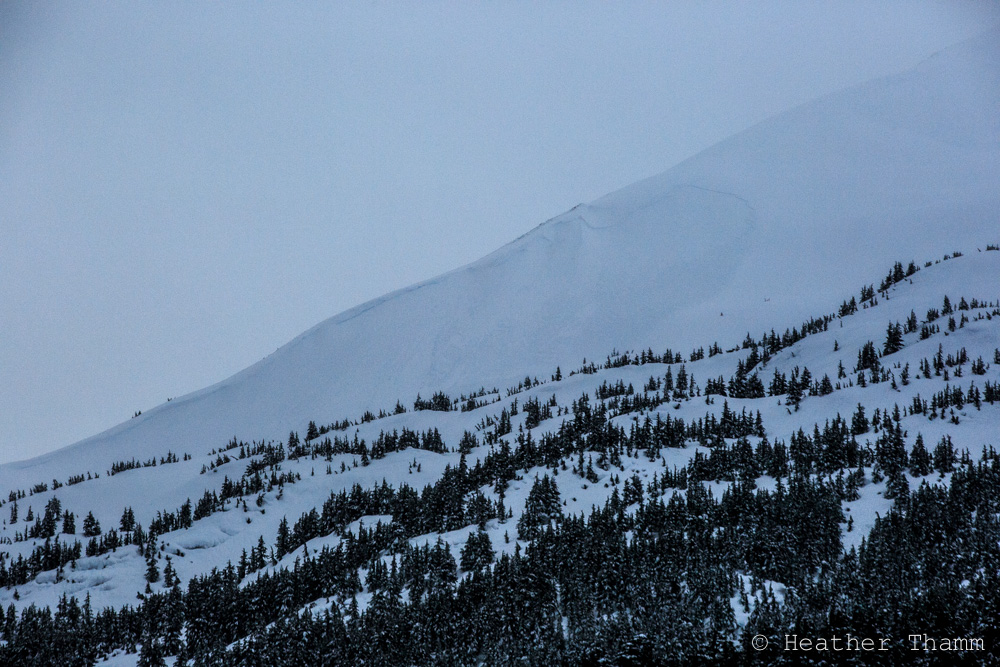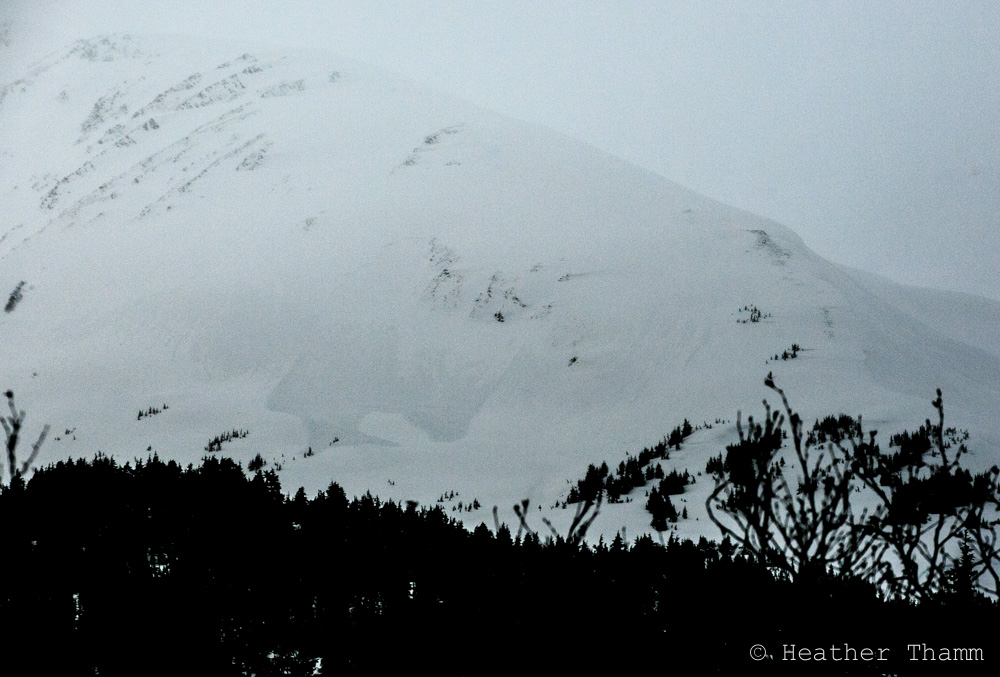Turnagain Pass
|
|
A HIGH avalanche danger exists in the Alpine where a person could trigger a large and destructive avalanche in Turnagain Pass and Girdwood. Today’s elevated danger is based on our travel advice: Travel in Avalanche Terrain is Not Recommended. A CONSIDERABLE avalanche danger is present below 2500′ where the snowpack is wet and saturated and triggering a wet loose avalanche on a steep slope or in a terrain trap will have high consequences. Below treeline a MODERATE danger exists where a wet avalanche from above is possible.
Elevated caution and careful snowpack assessment is recommended for Summit Lake where strong winds and new snow have added stress to a thin snowpack. Click HERE to read the most current Summit Lake Summary and HERE for an observation from yesterday.
State of Alaska Department of Transportation & Public Facilities Avalanche Closure Notification: There will be intermittent traffic delays today on the Seward Highway for avalanche hazard reduction work between Girdwood and Portage near mileposts 89 to 83. Motorists should also expect delays on Portage Glacier Road near mileposts 3 to 5. Delays of up to 45 minutes between 10:00 AM and 3:00 PM should be expected.


